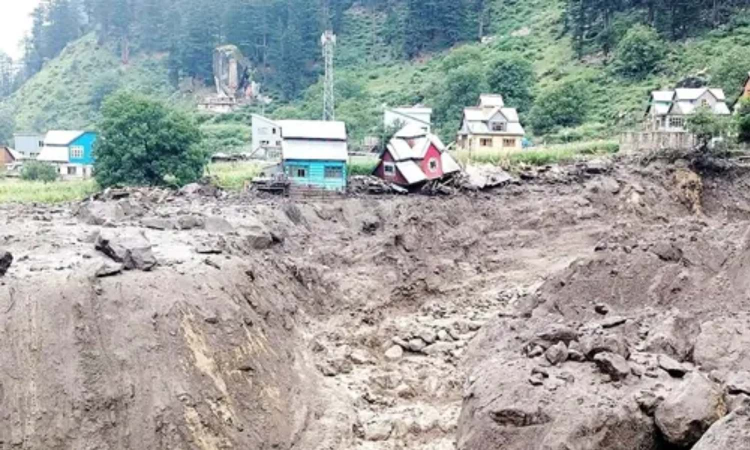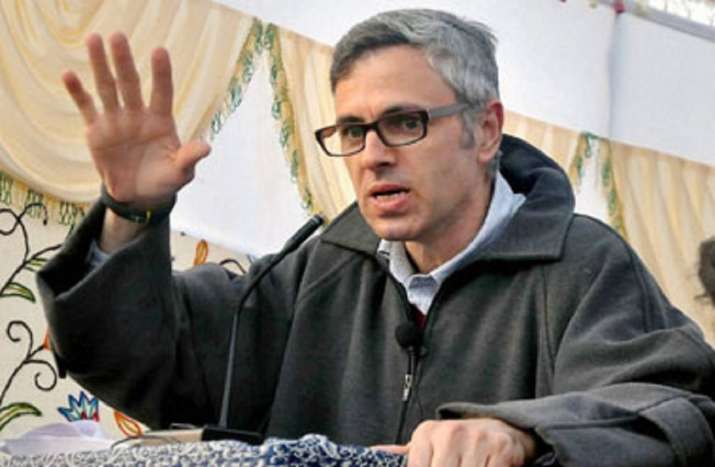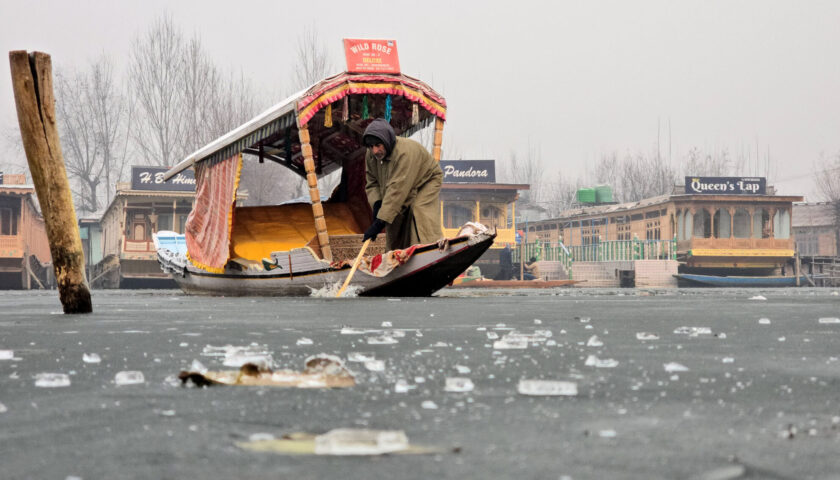Kishtwar Cloudburst 2025: 60 Dead, 69 Missing, Machail Mata Yatra Suspended After Flash Floods
By: Javid Amin | 16 Aug 2025
The August 14, 2025, Kishtwar cloudburst will be remembered as one of the darkest days in the recent history of Jammu and Kashmir. A sudden, violent downpour struck Chosoti village along the sacred Machail Mata Yatra route, unleashing a torrent of flash floods, boulders, and mudslides that buried everything in its path.
By the time the skies cleared and rescue teams began clawing through the debris, the grim tally stood at:
-
60 confirmed dead, including two CISF personnel.
-
69 people missing, feared trapped under rubble or washed away.
-
Over 100 injured, with 38 battling for their lives.
-
167 pilgrims and locals rescued, many in miraculous escapes.
The tragedy has thrown a spotlight not just on the vulnerability of Himalayan communities but also on the urgent need to rethink development, pilgrimage management, and climate resilience in the region.
The Moment Disaster Struck
It was just past noon when the first cracks of thunder echoed through the narrow valleys of Paddar in Kishtwar district. Pilgrims trekking towards the Machail Mata shrine, many of them stopping at Chosoti village, sought shelter in makeshift tents, langars (community kitchens), and temporary market stalls.
Within minutes, the skies opened up. A cloudburst, defined by meteorologists as an event where over 100 mm of rain falls in less than an hour over a localized area, hit the valley with deadly force.
“Suddenly, there was a sound like a bomb exploding… the mountain just collapsed,” recalls Shalu Mehra, a survivor who was briefly buried under debris before her daughter pulled her out.
The roaring waters, mixed with boulders, tree trunks, and mud, smashed through 16 homes, three temples, a 30-meter bridge, and the langar where dozens of pilgrims were eating. Vehicles parked nearby were tossed around “like toys,” as one survivor put it.
The Machail Mata Yatra Halted
For the people of Jammu, and particularly devotees across North India, the Machail Mata Yatra is more than a pilgrimage—it is a spiritual lifeline.
-
Began on July 25, 2025.
-
Scheduled to end on September 5, 2025.
-
Draws tens of thousands of pilgrims annually, many trekking the last 8.5 km stretch on foot.
But after the cloudburst, the administration announced its indefinite suspension.
The langar, once a place of devotion and service, became ground zero for destruction. Survivors recall how pilgrims were eating prasad moments before the flood struck.
“We had just eaten prasad when the flood hit. In seconds, everything vanished—people, tents, food, everything,” said Rakesh Sharma, a pilgrim from Kathua.
The sacred trek, meant to inspire faith, turned into a nightmare that has shaken the pilgrimage community.
Rescue and Relief Operations
Despite treacherous weather and blocked access roads, multi-agency teams rushed to the disaster site.
-
NDRF and SDRF: Deployed with earth-movers to clear rubble.
-
Army and Police: Coordinated rescue under extreme conditions.
-
Local volunteers: Played a key role in pulling survivors from the debris.
-
Control Room: Set up in Paddar (15 km away), with helpline numbers activated.
Helicopters could not initially take off due to thick cloud cover and heavy rain, forcing rescue teams to trek through mud-choked paths. Still, 167 lives were saved, including several children pulled out alive after hours under debris.
Union Minister Jitendra Singh confirmed “substantial casualties” and assured all possible assistance. Lieutenant Governor Manoj Sinha called the incident “anguishing” and directed all agencies to scale up relief work.
Survivor Testimonies
The raw human stories emerging from Chosoti reveal the true scale of the tragedy:
-
Putul, survivor: “I was standing on a rock and survived. But I can’t find many of my family members. It feels like the earth swallowed them.”
-
Sanjay Kumar, 42: “The langar was full—some eating, some resting. Suddenly, a flash flood carrying boulders flattened it. Vehicles toppled and were swept away. I survived, but both my legs are fractured. It feels like a miracle.”
-
Subhash Chander Gupta, Langar head: “I heard screams all over followed by silence. I was stuck under a boulder for three hours. When I came out, everything was gone.”
These voices reflect both the helplessness and resilience of those caught in nature’s fury.
The Science Behind the Cloudburst
Why are such deadly cloudbursts becoming more frequent in the Himalayas?
Natural Factors
-
Orographic Lift: Moisture-laden monsoon winds rise sharply over mountains, cooling and condensing into thunderclouds.
-
Cumulonimbus Clouds: Strong updrafts trap water droplets until the cloud bursts, releasing sudden torrents.
Human-Induced Triggers
-
Global Warming: The Himalayas are warming faster than the global average, increasing atmospheric moisture.
-
Unplanned Construction: Roads, markets, and even pilgrimage facilities are often built on natural drainage paths.
-
Deforestation: Weakens slopes, making them prone to landslides.
-
Overcrowding During Yatra Season: Thousands of pilgrims increase strain on fragile ecosystems.
As Dr. Yudhbir Singh, a Jammu University geologist, notes:
“Cloudbursts are natural, but their impacts are magnified by reckless human activity. We have turned valleys into traps.”
Wider Himalayan Context
This tragedy is not isolated. Just days before, flash floods in Uttarkashi (Uttarakhand) claimed dozens of lives. In Ladakh, heavy rains submerged agricultural land near Pangong Lake.
The Himalayan belt—from Kashmir to Arunachal—is increasingly facing:
-
Cloudbursts and glacial lake outburst floods (GLOFs).
-
Landslides blocking highways like the Srinagar–Jammu road.
-
Loss of homes, crops, and infrastructure in remote villages.
For residents, pilgrimage disruptions are temporary; but for local families who lost homes, land, and loved ones, recovery will take years.
Lessons and Warnings
The Kishtwar cloudburst is both a tragedy and a warning. Experts and policymakers agree on several urgent measures:
-
Early Warning Systems: More weather radars and real-time alerts for remote valleys.
-
Pilgrimage Management: Regulating numbers, improving shelter safety, and monitoring weather before treks.
-
Eco-Sensitive Development: No construction on riverbeds and nullahs.
-
Reforestation: Strengthening slopes through tree plantation.
-
Community Training: Local volunteers trained in disaster response.
Unless these steps are taken, such “freak disasters” will become annual tragedies.
Human Spirit Amid Tragedy
Amid the despair, stories of courage stand out:
-
A 7-year-old boy rescued his mother by pulling her out from under debris.
-
Villagers opened their homes to stranded pilgrims.
-
Army doctors set up makeshift camps to treat the injured despite limited supplies.
These acts remind us that even in the harshest moments, humanity shines through.
Final Word: A Call for Resilience
The 2025 Kishtwar cloudburst is not just a local tragedy—it is part of a global climate emergency. From Pakistan’s floods to Himalayan cloudbursts, South Asia is bearing the brunt of unpredictable, violent weather.
For the pilgrims, the suspension of the Machail Mata Yatra is heartbreaking. For the families who lost loved ones, the pain will last a lifetime. But for policymakers and citizens alike, this must serve as a wake-up call to balance faith, development, and environmental sustainability.
If ignored, the Himalayas—our water towers and spiritual highlands—will continue to remind us of their fury in the harshest possible ways.




